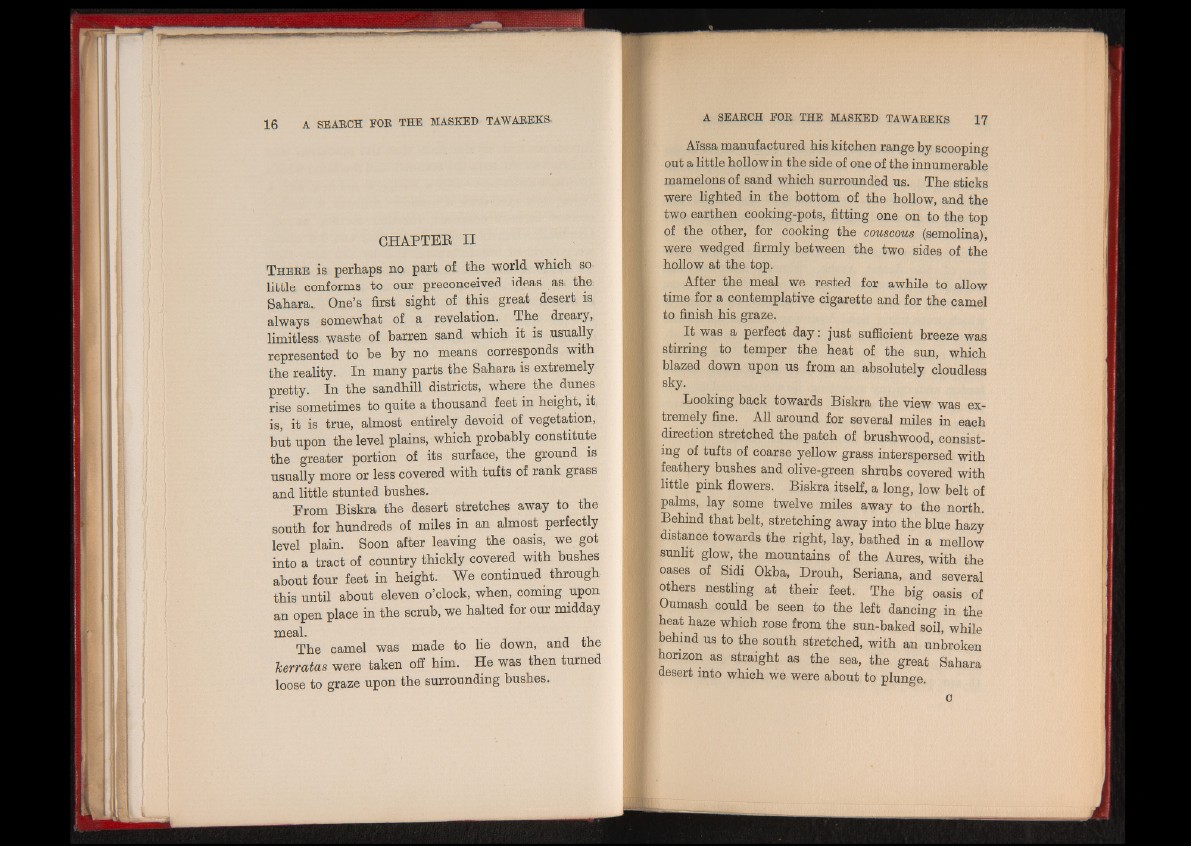
CHAPTER II
T here is perhaps no part of the world, which so
little conforms to our preconceived ideas as the:
Sahara. One’s first sight of this great desert is
always somewhat of a revelation. The dreary,
limitless waste of barren sand which it is usually
represented to be by no means corresponds with
the reality. In many parts the Sahara is extremely
pretty. In the sandhill districts, where the dunes
rise sometimes to quite a thousand feet in height, it,
is, it is true, almost entirely devoid of vegetation,
but upon the level plains, which probably constitute
the greater portion of its surface, the ground is
usually more or less covered with tufts of rank grass
and little stunted bushes.
Erom Biskra the desert stretches away to the
south for hundreds of miles in an almost perfectly
level plain. Soon after leaving the oasis, we got
into a tract of country thickly covered with bushes
about four feet in height. We continued through
this until about eleven o’clock, when, coming upon
an open place in the scrub, we halted for our midday
meal. .
The camel was made to lie down, and the
kerratas were taken off him. He was then turned
loose to graze upon the surrounding bushes.
Aissa manufactured his kitchen range by scooping
out a little hollow in the side of one of the innumerable
mamelons of sand which surrounded us. The sticks
were lighted in the bottom of the hollow, and the
two earthen cooking-pots, fitting one on to the top
of the other, for cooking the couscous (semolina),
were wedged firmly between the two sides of the
hollow at the top.
After the meal we rested for awhile to allow
time for a contemplative cigarette and for the camel
to finish his graze.
It was a perfect day: just sufficient breeze was
stirring to temper the heat of the sun, which
blazed down upon us from an absolutely cloudless
sky.
Looking back towards Biskra the view was extremely
fine. All around for several miles in each
direction stretched the patch of brushwood, consisting
of tufts of coarse yellow grass interspersed with
feathery bushes and olive-green shrubs covered with
little pink flowers. Biskra itself, a long, low belt of
palms, lay some twelve miles away to the north.
Behind that belt, stretching away into the blue hazy
distance towards the right, lay, bathed in a mellow
sunlit glow, the mountains of the Aures, with the
oases of Sidi Okba, Drouh, Seriana, and several
others nestling at their feet. The big oasis of
Oumash could be seen to the left dancing in the
heat haze which rose from the sun-baked soil, while
behind us to the south stretched, with an unbroken
horizon as straight as the sea, the great Sahara
desert into which we were about to plunge.
c